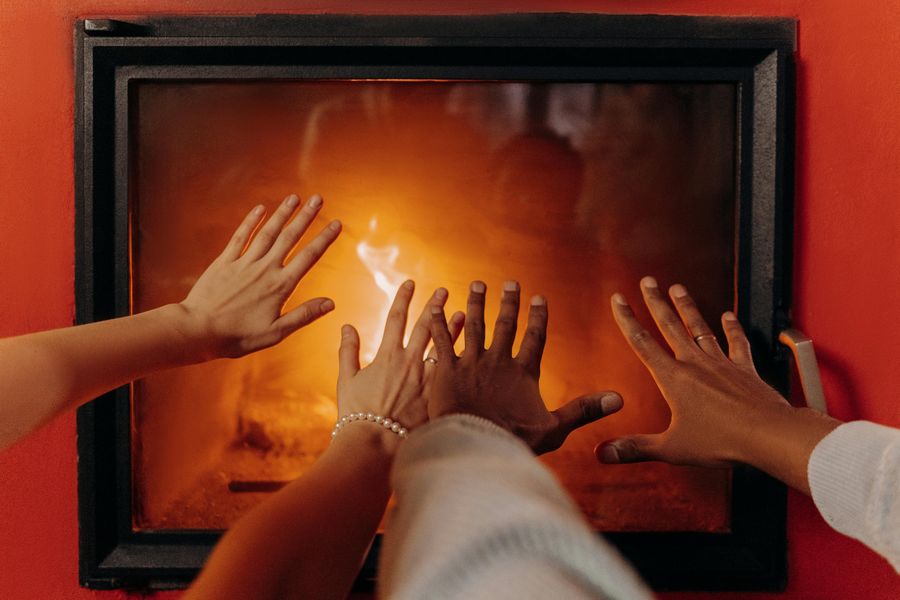Marital Traditions: Understanding the Origins and Choosing What Works Best for You
Weddings are often hailed as one of the most significant moments in our lives, but the traditions that come with them can often be overwhelming. With so many societal standards to follow, it can be daunting to know which traditions are worth including in your special day.
Let us take a deeper dive into the origins of some of the most popular traditions and explore how you can choose what works best for you.
Consideration of Following Traditions
Weddings have been a part of human society for centuries, and with that comes a long list of traditions. From the bride’s white dress to the veil and ring bearer, each tradition holds a specific significance.
However, choosing which traditions to follow can be a daunting task.
Choosing Marital Traditions
When choosing which traditions to include in your wedding, the first step is to have a conversation with your partner. Discuss your preferences and consider the significance of each tradition.
Remember, just because society says you should do something, doesn’t mean you have to.
Origins of Traditions
From the veil to the best man, each tradition has a unique beginning. Veils, for example, were originally worn to protect the bride from evil spirits.
The wedding band on the fourth finger of the left hand represents the “vein of love” that runs directly to the heart. However, superstitions such as rain on your wedding day have been found to be baseless.
The Proposal
Traditionally, the man asks the woman to marry him and seeks permission from the bride’s father. However, in modern times, alternative proposals have become increasingly common.
Women proposing to their partners or deciding together what the next steps should be are just as valid as the traditional proposal. Permission vs.
Choice
The idea of asking for permission from the bride’s father can be seen as antiquated. It places the father in a position of power and suggests that the bride is the property of her father.
Asking for permission may have been the norm in the past, but times have changed, and it is crucial to make decisions based on mutual respect and consent. Ultimately, the choice of which traditions to follow is a personal one.
Take the time to consider the significance of each one, and don’t be afraid to make it your own. Remember, your wedding represents you and your partner, and it should reflect who you are as a couple.
In conclusion, weddings are a time of love and celebration, but it can be easy to get lost in societal norms and traditions. When planning your special day, take the time to consider each tradition’s meaning and make choices based on what suits you and your partner best.
Expanding on the Topics of Rings and Gender Roles
While wedding rings are an enduring symbol of marriage, they have a contentious history. Similarly, traditional gender roles have evolved over time, making it vital to explore what options couples have today.
Symbolism of Wedding Rings
A wedding ring typically represents an endless circle, symbolizing the infinite nature of love and commitment. It is worn as a symbol of marriage and love, and it signifies the bond between two people.
Historical Origins of Rings
The practice of giving a ring to a bride-to-be dates back centuries. At the time, the groom would pay a fee to the bride’s father for her hand in marriage.
This payment was called a dowry, and the ring was a symbol of the price paid for her ownership. However, today, the tradition has shifted to their symbolic meaning with couples exchanging vows and rings to signify their commitment to each other.
Personal Interpretations of Rings
Rings can have various personal meanings, and it is essential to choose one that suits you best. Some might prefer elaborate rings with diamond-studded bands, while others opt for simpler designs.
There is also a matter of who wears rings on his or her hand. Some people feel that wearing a wedding ring is a representation of belonging to someone else and prefer not to wear one.
Traditional Gender Roles
Throughout history, traditional gender roles have been pervasive in many cultures. Men were expected to be providers, going to work to support the family, while the women stayed home to take care of the house and children.
However, these restrictive gender roles have come under scrutiny in recent times.
Alternative Gender Roles
In modern times, gender roles have become flexible and more fluid than they used to be. Many couples have started to switch traditional gender roles, allowing for the man to work part-time or stay home with the children while the woman becomes the primary breadwinner.
This shift has not been without pushback, but it is crucial for couples to consider their individual strengths and discuss what works best for them.
Personal Preferences for Gender Roles
When it comes to gender roles, personal preferences must play a significant role. Both partners must find a balance in sharing responsibilities.
Conversations about working full-time, part-time, or running the household should be had to establish an arrangement that works best for everyone involved. Open communication is key to ensuring everyone feels appreciated and the partnership remains healthy.
In conclusion, weddings and marriages are a celebration of the love and commitment that two people share. While symbols like wedding rings hold significant meaning, it is vital to reflect on the questionable history behind some traditions.
Similarly, gender roles have evolved in recent years, allowing couples to establish arrangements that work for them. These discussions may require patience and understanding from both partners, but in the end, it is about creating a partnership that is fulfilling and sustainable for both parties.
Expanding on the Topics of Last Names and Vows
The decision of whether to take a spouse’s last name and the choice of traditional or personal vows is an individual one. There are many considerations that go into making these choices, and it is important to explore alternatives that work for both partners.
Traditional Practice of Taking Husband’s Last Name
Taking a husband’s last name is a patriarchal tradition that dates back to times when women were seen as property. A woman taking her husband’s last name meant that she was transferring ownership from her father to her husband.
Today, however, the practice is more symbolic of two people establishing a new family unit.
Alternatives to Taking His Last Name
Many couples choose alternatives to the traditional practice of women taking their husband’s last name. These may include taking the wife’s last name, creating a new last name together, or hyphenating the two names.
The decision to change or keep last names is entirely up to the couple involved.
Personal Preferences for Last Name
The decision on what last name to take can be a difficult one. Some people prefer to keep their own last name as it carries family history and cultural importance.
Meanwhile, others may prefer their partner’s last name because it sounds better or has a more accessible pronunciation. Others may decide to hyphenate their last names, providing a compromise that honors their family histories.
Traditional vs Personal Vows
Traditionally, wedding vows are religious or legal in nature, requiring couples to pledge obedience and loyalty to one another. However, in recent times, couples are increasingly choosing to write their own vows that speak to their personal commitment and expression of love.
Removing Traditional Language
The use of language in traditional vows, such as “obey,” can be seen as outdated and inappropriate in modern times. Removing such language provides couples a more equitable partnership based on mutual respect and shared decision-making, allowing them to establish family values unique to their relationship.
Personal Choices for Vows
When deciding on vows, it is essential to approach it as a couple and decide together what will be meaningful to both parties. Couples can choose to use traditional vows, personalize them to make them more meaningful, or write their own vows, incorporating personal promises of love and commitment.
In conclusion, the choice of last names and vows is a deeply personal one. Decisions on these matters should be approached with open communication between the partners to find an arrangement that works best for them.
Whether it’s sticking to traditional practices or forging new paths unique to the couple, these choices should be made with mutual respect and consideration. Ultimately, the success of any partnership lies in the willingness to work together to create a fulfilling life together.
Expanding on the Topics of Children and Sharing a Bed
When it comes to starting a family and sharing a bed, it is essential to understand that societal norms may not always be true for everyone. It is crucial to have open communication and discussions on what works best for both partners.
Assumption of Wanting Children
It is often assumed that married couples want children. While children can bring joy and a sense of fulfillment, it’s important to understand that not all couples want children.
The decision to have children should be mutual and not based on societal pressure.
Deciding on Having Children
When considering having children, it is essential to have open discussions with your partner about your preferences. Some of the deciding factors can include lifestyle changes, financial impact, and timing.
Ultimately, the decision to have children must be a joint decision that works best for both partners. Discussing Possibilities of Infertility, Adoption, Fostering
Couples who want children but have fertility issues can explore other possibilities such as adoption or fostering.
These options allow couples to start a family and provide a loving home for children in need. However, it’s essential to explore these options thoroughly and ensure that both partners are emotionally and financially ready for the challenge.
Expectation of Sharing a Bed
Societal norms often assume that married couples should share a bed every night. However, each individual’s needs and preferences can vary.
Sleep is an essential aspect of life, and it’s crucial to find a way that works best for both partners.
Alternatives to Sharing a Bed
Some couples choose alternatives to sharing a bed, such as having two separate beds or different rooms. Issues of insomnia, sleep apnea or sleepwalking, among others, can contribute to this decision.
Sleeping separately should not be seen as an indication of a troubled relationship, but as a practical solution to improve sleep quality and overall happiness.
Personal Preferences for Sleeping Arrangements
It’s important to understand that personal preferences should determine sleeping arrangements. Couples must communicate their individual needs, such as sleep schedule, temperature, and environment, to ensure a good night’s sleep.
Personal preferences should be discussed continuously and adjusted according to specific needs and preferences. In conclusion, societal pressures on starting a family and sharing a bed do not work for everyone.
Decisions about children and sleeping arrangements should be based on personal preferences and open communication between partners. Discussing the options of infertility, adoption, and fostering, and exploring alternatives to sharing a bed is essential to create a fulfilling and healthy life together.
Remember, debunking societal norms and finding what works best for you and your partner is essential. In conclusion, marriage is a personal and unique journey for every couple.
Whether it’s deciding to follow traditions, choosing last names, or starting a family, it’s crucial to approach these decisions with open communication, respect and consideration for each partner’s preferences. Sharing a bed and deciding to have children are likewise life-changing decisions that should be thoroughly discussed.
Remember to listen to each other’s needs and work together to find the best solutions. Ultimately, the significance of navigating these topics is to create a fulfilling and sustainable life together, embracing what works best for you as a couple.



